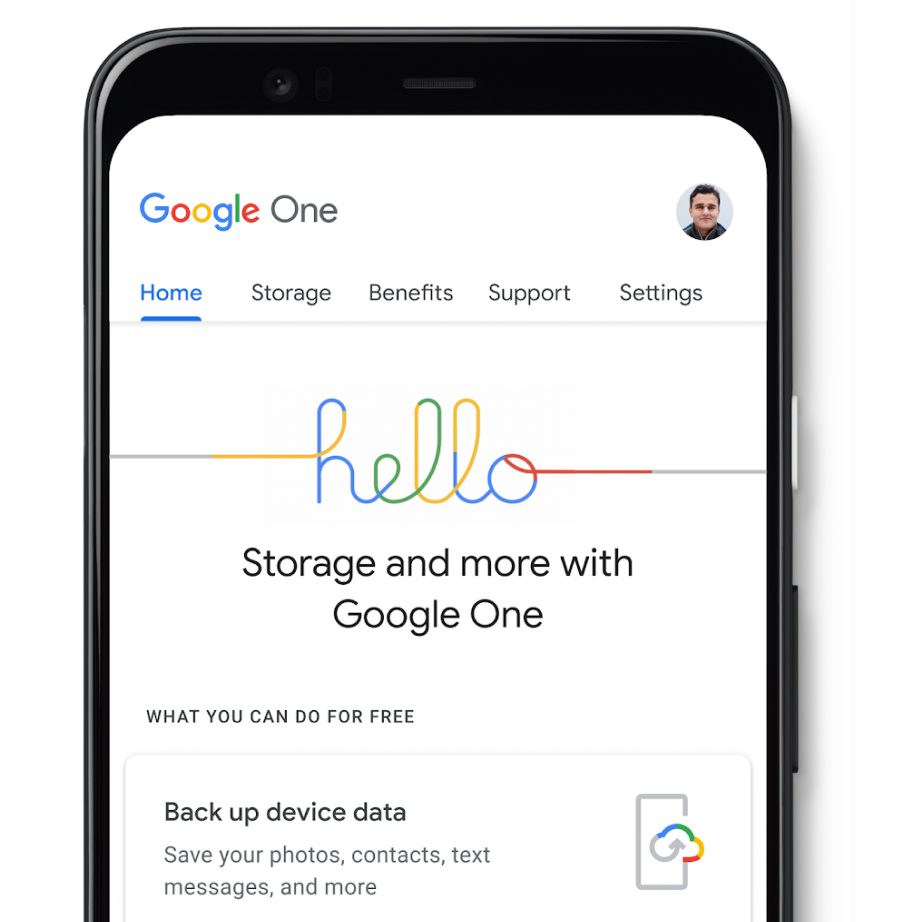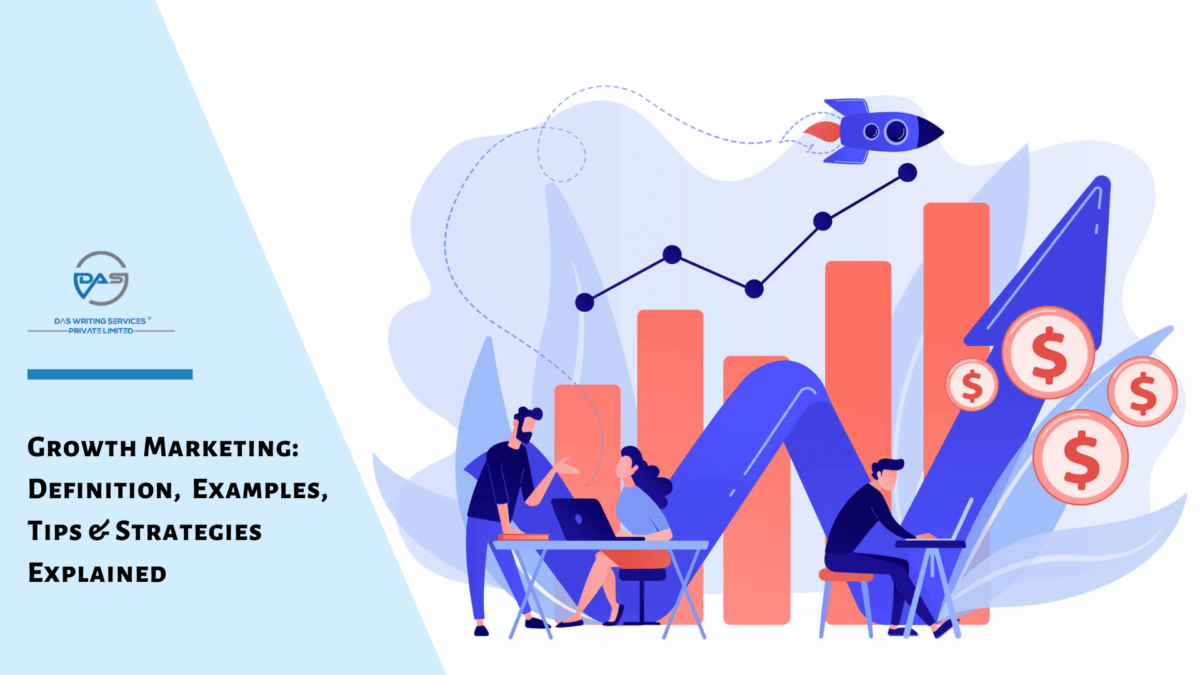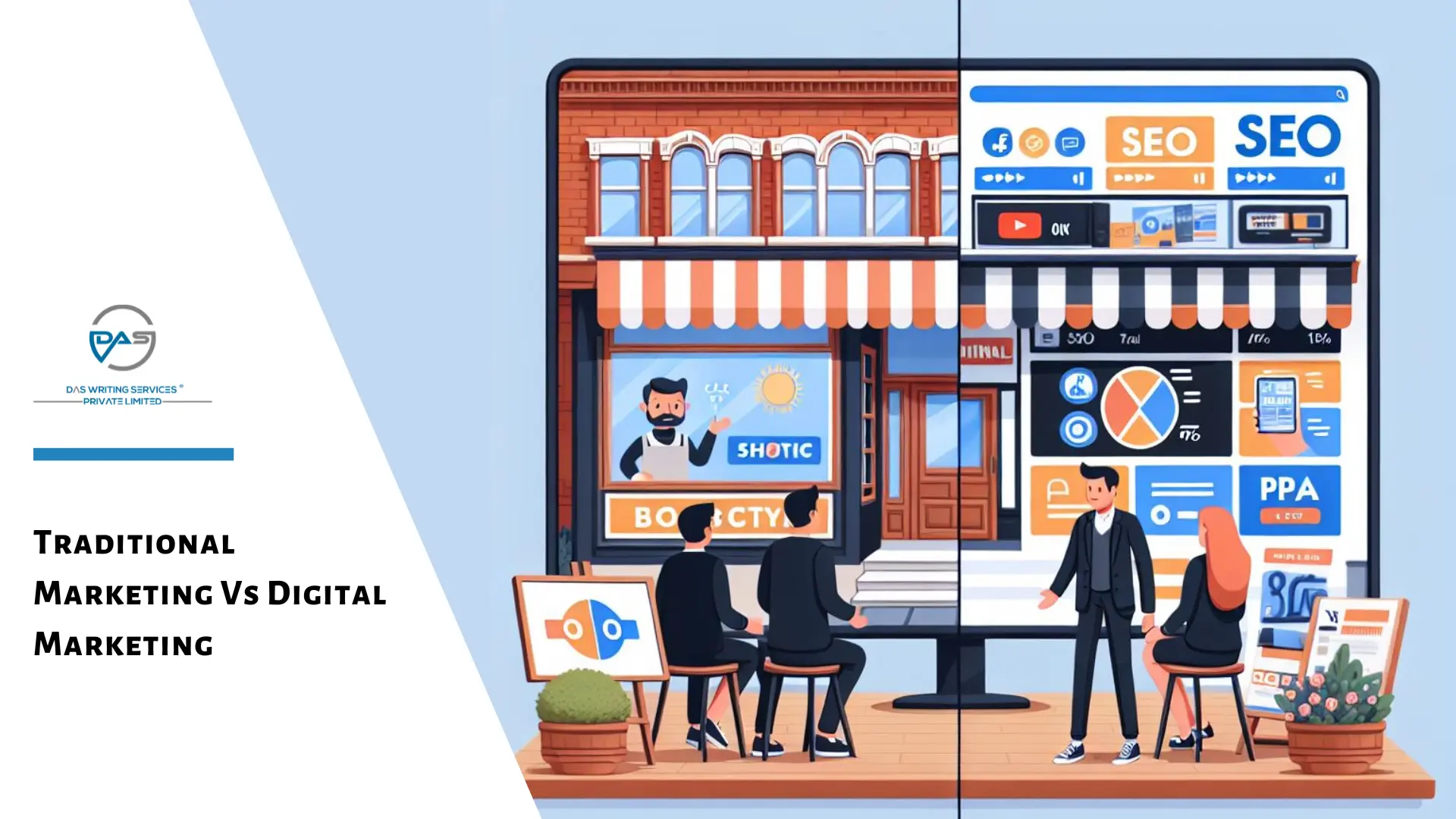Nowadays, people throw around the term growth marketing a lot. Especially in today’s startup culture, growth marketing and growth hacking have become synonymous words essential to scale.
Because a steady group of audience is not only for closing sales but essential to survive in a highly competitive market. And that is exactly what growth marketing strategies promise. Not temporary spikes in revenue but successful growth that sustains over a long time.
So, let us go deep into the whats and hows of growth marketing and the ways a business can benefit from this marketing strategy.
What is Growth Marketing?
It is essentially a people-first approach to marketing that implements data-driven strategies that guide the growth of a business. Growth hackers conceptualise efficient, multidimensional marketing campaigns that address the pain points of their audience.
So, is growth marketing only for startups? To speak plainly, no. Growth marketing is for anyone and everyone willing to scale in their industry and establish a stronghold in the market.
Differences between Growth Marketing and Traditional Marketing
Are you familiar with the jingles that accompanied popular ads once upon a time? That is one of the examples of conventional marketing or advertising strategy. Here, the marketing team had one and only objective that is to create awareness about the brand and its products and services.
However, there is a fundamental problem with this strategy in the present day. From finding television and radio ads creative and amusing, the abundance of ads has led to most people finding them obtrusive and annoying.
We no longer pay enough attention to the ads for them to create the necessary impact. So, the chances of getting conversions are pretty thin with these typical marketing strategies. That is where growth marketing helps:
- Conventional marketing strategies encourage direct sales, while a growth marketing team adapts multiple approaches for the overall growth of a business.
To elaborate, the term growth marketing refers to a combination of promotional campaigns and marketing strategies that are directed to grow the customer base of a business.
- While most marketing campaigns run around specific products to achieve immediate results, growth marketers adopt a holistic marketing approach.
They perform a thorough analysis of the target group, their preferences, and pain points, and conceptualize creative solutions.
- Traditional marketing focuses only on ads across different channels and mediums. Comparatively, growth marketing leverages a lot of options like content, ads, newsletters, videos, PPC etc.
This allows the marketers to not only attract the users but also inspire and educate them to create a better bond that accelerates the natural growth of a business.
Top 8 Growth Marketing Strategies
One common myth about growth marketing or “growth hacking” is that of being a secret technique. It is not so much of a secret technique than a creative and critical endeavor which is the driving force of customer acquisition.
Each business is different, so they need tailored strategies that cater to the target group. Reason why much of growth marketing focuses on experimental practices, trying multiple strategies that may produce quantifiable growth.
The following are some of the most widely used strategies by marketers:
1. Leverage Full Funnel Content Marketing
Content marketing is vital for any company looking to develop an online presence. It is one of the most effective and sustainable practices to increase your audience engagement and build a loyal community around the brand.
Yet, many businesses fail to use content marketing to its full capacity. Simply because they create content only for the top of the funnel. This results in increased traffic but not enough leads or conversions.
In order to truly hack the growth of your business, opt for full funnel content marketing that guides the user through each step of the marketing funnel encouraging conversions. A mix channel of off-page and on-page along with creating diverse genres of content help the customers journey through the conversion.
2. Offer Freemiums
If you are a B2B company or trying to create a name in an established industry, offering freemiums is a ‘tried and tested’ method to capture new quality leads. Especially in the SaaS industry, limited time trials or limited access versions of your software and tools are useful to generate awareness about the brand.
Even for D2C for B2C businesses, offering trial packs are a sure-shot strategy to grow business and attract new customers in a saturated market. Trial packs or limited access applications offer the users a taste of the product or service. Further, such freemiums are also a great way for efficient lead generation that you may then later convert into paying customers.
3. Run A/B Testing for Landing Pages
One of the primary advantages of online marketing is the extent of customizability it offers. A/B testing is one such tool that allows multiple iterations of promotional campaigns. So you find out in real time about which versions of the campaign are more effective on your target group.
Aside from offering multiple versions of ads or promotional content, effective A/B testing allows business owners better control over marketing expenses. It cultivates a deeper understanding of the target group’s preferences for more efficient marketing strategy formulation.
4. Adopt the Latest SEO Optimization Strategies
This may seem like a no-brainer but is really the most crucial tool for growth marketing. Efficient SEO optimization across all verticals like on-page, off-page, local and technical SEO can offer rapid organic growth like nothing else.
An independent study suggests, an effective SEO strategy with proper keyword optimization can maximize your growth up to 4 times. And it all begins with periodically tracking your page rankings. Refresh the page content, include LSIs, and add footer content and secondary keywords to nudge your SERP ranks.
We would suggest performing a thorough SEO audit periodically and adopting new strategies to keep the organic marketing campaigns up and running.
5. Target Zero Volume Keyword
Every keyword is important when you are trying to get more users. But with high competition, ranking against popular high volume keywords proves quite difficult.
Enter: zero volume keywords. They are not visible on tools, so they tend to have less competition than popular high-difficulty keywords. But the downside of zero volume keywords lies in unpredictability. You cannot guess their volume, if they will bring 10 users or 10 thousand – you never know.
6. Run Email Marketing Campaigns
An effective email marketing campaign is essential when you are aspiring for a full funnel marketing campaign. For your leads are not going to convert themselves!
Make good use of your email list by sending newsletters and promotional offers. Encourage quality conversions by highlighting the benefits of your product or service. At Das Writing Services, we believe in creating knowledge among your potential customers to create loyal clients. When adopted with email marketing, this approach has enabled several companies to nurture long-term relationships with clients.
7. Introduce Referral Program
Referral programs are one of the everlasting strategies to hack the growth of your business! Reputed brands all over the world like Uber, PayPal, and AirBnB run some sort of referral programs.
The goal is simple, to attract new customers from the network of established customers. They are mostly free of cost and require virtually no infrastructure to run a campaign.
8. Adopt Disruptive Marketing Strategies (With Example)
Last but not the least, aggressive growth marketing requires some type of disruptive marketing strategy. These are innovative, out-of-the-box measures that require a thorough understanding of your target group.
A contemporary example of such out-of-the-box disruptive marketing is leveraging social media comments. As short videos gain (aka: reels) popularity on platforms like Instagram and Facebook, brands use witty captions in the comments to drive user attention and engagement – creating a positive social media image around the brand.
Examples of Growth Marketing
While most brands use product marketing to increase sales, global brands use a robust marketing plan that engages users while driving the growth of the brand at the same time. The following section discusses the growth marketing efforts of LinkedIn and Google to get more customers and increase revenue.
Uber Referral Program
Uber has created a benchmark of growth marketing with its referral strategy that allowed the cab hailing service to emerge as a global giant with a staggering 150 million monthly active customers. The brand has ensured its market position by constantly acquiring new customers through referrals.

As a part of this marketing strategy, Uber effectively turned each customer into an affiliate marketer who could get benefits against successful referral. It allows each Uber user to get discounts on the next ride for each successful referral. The long enduring strategy of Uber is later adopted by other start-ups to quickly increase consumer base by incentivising users for each new referral.
Google One Cloud
While Apple Cloud has been a long-standing phenomenon, it took some time for Google to popularize the One Cloud Storage service in India. Especially with Android OS catering to all income groups, getting people to pay for storage was a long standing obstacle in growth for Google.

The company used this opportunity by making Google One an in-built app for Android devices. After building some brand awareness about the features and benefits of the service, Google started collaborating with manufacturers to bundle trial access to Google One Storage. Aside from this, the company also offers discounts on Google One for new subscribers in India to encourage conversions.
With this strategy, Google accelerated its growth in a completely new vertical of the paid subscription model in India. Recently, the company declared that it will bundle the Gemini AI with Google One subscriptions which are expected to be another growth opportunity for the tech giant.
Tips to Create a Growth Marketing Campaign
A growth marketing campaign is essentially an all-hands-on-deck situation where multiple departments come together and collaborate with each other to create effective strategies. You may begin with the A-A-R-R-R (Acquisition, Activation, Retention, Referral, Revenue) approach to kick start your campaign:
1. Set Your Goals
So the first and foremost aspect of creating a growth marketing strategy is to identify what you want. Having some vague qualitative projection of your aspirations are simply no good. You will want to quantify and measure your goals to find out the efficacy of your strategy.
Implementing goals like 3x website visitors in 4 months or a 20% increase in the number of qualified leads within 6 months can be useful to stay on track.
2. Define the KPIs of Your Campaign
The next step to create scalable marketing campaigns is to define the key areas of your growth. For instance, to realize the above-mentioned goal of increasing website visits, we must find ways to achieve so.
Aggressive content marketing across different channels with keywords optimized for the target group can prove useful to drive new audiences to the website. Hiring quality content writing services that can optimize content as per your audience is always a good start to ensure better rankings and visibility to the target group.
3. Track the Buyer Journey through the Conversion Funnel
Initiating the buyer journey through the marketing funnel could be easy depending on your industry. In any way, top of the funnel audiences are relatively easier to get. However, most users tend to leave through the middle of the funnel before arriving at the bottom.
This is exactly where businesses need to work by curating customized landing pages, relevant ads and appropriate CTAs through the page. Through data insight tools like Analytics and Semrush identify the phase where the users tend to leave.
Implement attractive offers and promotions in such areas to reduce the bounce rate and enable efficient conversions.
4. Perform Data Analysis
And we cannot stress this enough! Abundant data plays the most advantageous role in growth marketing. To implement user engagement strategies, listening to your data is vital.
Identify the topics people want to read about and find out what they don’t want to know – this should give a thorough understanding of what to do and what not to do.
Tracking the heatmap of your pages can help to understand where your users tend to stay and where they do not. Placing appropriate CTAs in such sections may prove useful to drive up your conversion rates.
5. Listen to Customer Feedback
Implementing product-marketing integration strategies in your campaigns allows you to provide a seamless and unified experience to the audience. It also gives you a chance to listen to what the users have to say about your offerings.
Listening in on comments on social media and actively encouraging people to interact and offer feedback to your brand always leaves a positive impact. It makes the customers develop a stronger bond with the brand. As a plus side, the feedback should always give you much-needed insights about what is working and what not.
Ultimately, it is for the customer that a business exists, so taking time to align your product and services as per the needs of the market is the best way to accelerate your growth.
Conclusion
Having gone through all the intricacies of growth marketing, it should be fairly clear as to when should you launch a growth marketing drive and exactly what to expect out of it.
In a nutshell, while businesses can achieve all-around growth organically over time, adapting data-driven marketing tactics yields efficient results for consumers as well as reducing their struggles and problems.
Thereby, making growth marketing a win-win situation favourable for all.
Frequently Asked Questions
1. How important is growth marketing?
Growth marketing is important for businesses looking to increase their customer base through data-driven strategies and campaigns.
2. What is a growth marketing strategy?
A growth marketing strategy involves marketing campaigns across multiple channels and platforms to realize its growth for expansion.
3. Is growth marketing a skill?
Growth marketing is an essential skill that allows businesses to identify and address customer pain points. Marketers need to possess technical skills and critical insights into consumer behaviour to identify opportunities for growth.
4. Why hire a growth marketer?
Growth marketers critically analyze a business’ marketing and operations model and formulate strategies to enable the overall growth of a business.
5. When should I hire a growth marketer?
To kick-start a business, one should hire a growth marketer as soon as the products and services are ready to hit the market.

Ritish Dutta is a seasoned Content Developer with over 7 years of experience in the industry. Currently, at Das Writing Services, he writes SEO-optimized content that caters to our diverse clientele. Ritish utilizes his critical insights and experience to talk about digital marketing, SEO content writing, content strategy, and AI.

Ritish Dutta is a seasoned Content Developer with over 7 years of experience in the industry. Currently, at Das Writing Services, he writes SEO-optimized content that caters to our diverse clientele. Ritish utilizes his critical insights and experience to talk about digital marketing, SEO content writing, content strategy, and AI.




Leave a comment
All comments
Binance - rejestracja
Your article helped me a lot, is there any more related content? Thanks!
Arghish Das
Great article! This is a really helpful guide to growth marketing. I especially liked the part about using zero-volume keywords.
Cemal
Great article about Growth Marketing
thanks